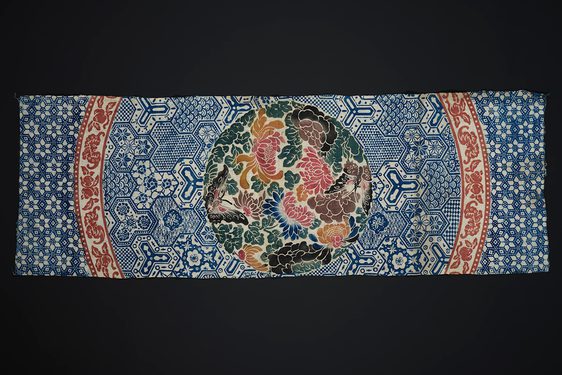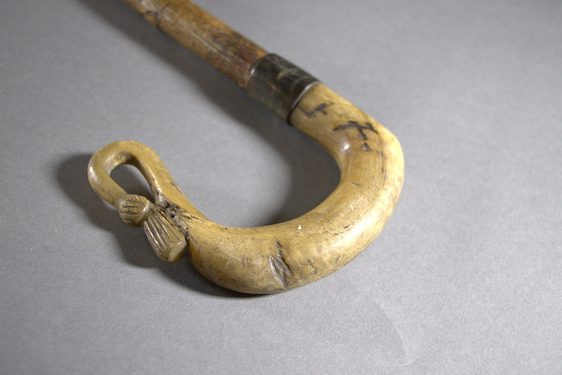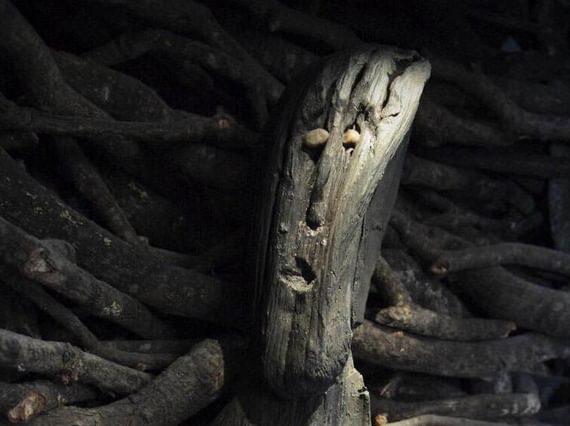
A mysterious Iron Age figure from Ballachulish
News Story
Fertility figure or Iron Age goddess of the straits? This carved sculpture of a female dates from around 600 BC, but her meaning remains unknown.
In November 1880, a carved wooden sculpture was found in a bog in Ballachulish, Inverness-shire. The figure was covered by the remains of a wickerwork structure. It is likely the bog, overlooking the entrance to Loch Leven, was a sacred place.
The figure
The Ballachulish figure is carved from a single piece of alder wood, 1.4 metres tall (just under five feet), with quartzite pebbles for eyes that stare at the onlooker.
It depicts a naked woman with her hands placed on her belly. She was carved to be seen from all sides, with a well-shaped head and a top-knot of hair. The legs end in a solid block of wood, with a rectangular hollow carved into its front which would once have held something, now lost.
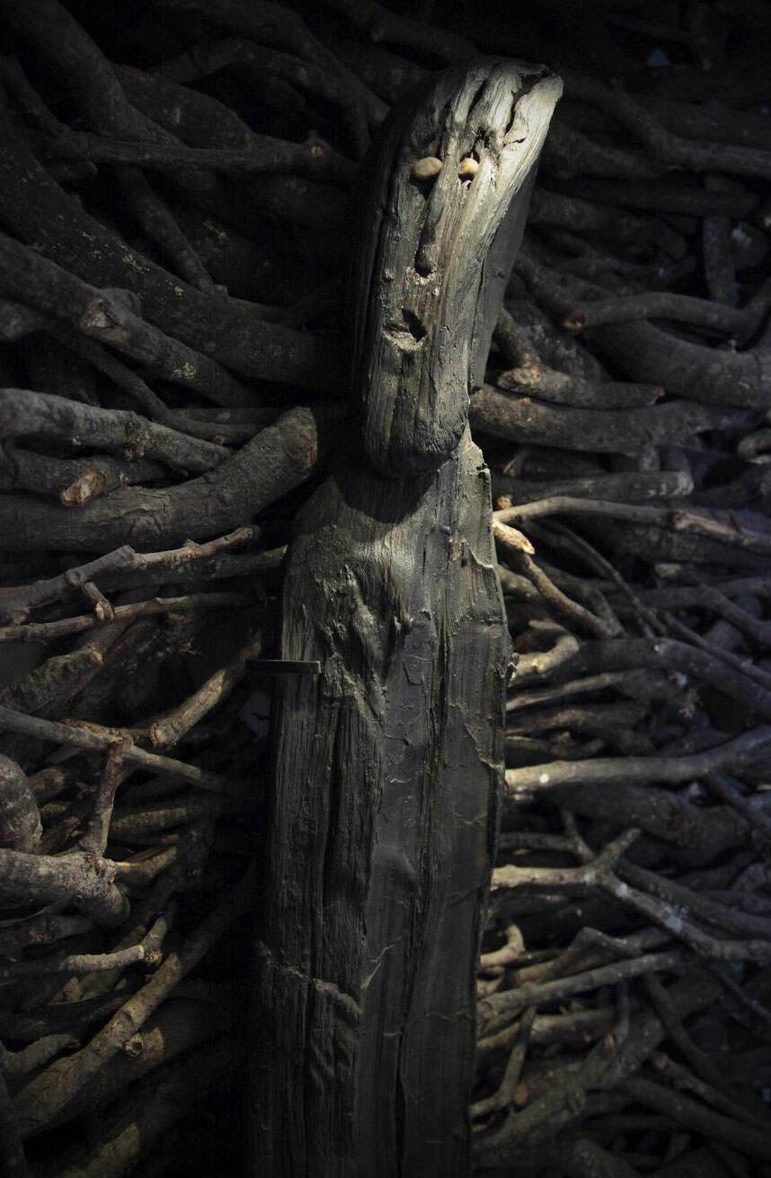
Iron Age sculpture made from alder wood with quartzite pebbles for eyes. Museum reference X.KL 54.
Supernatural protection
Although the figure is unique in Scotland, other wooden figures dating to the Bronze and Iron Ages (around 2000 BC to AD 400) are known from Britain, Ireland and the Continent. Often these are found in special places – beside a bog, or where a trackway crosses the wetland. They may represent supernatural beings, spirits of the place, or perhaps memorable ancestors.
Ballachulish is a special place: the findspot overlooks the dangerous straits linking Loch Leven with the sea. Perhaps this figure represented the spirit of the straits, who might protect prehistoric travellers. Her pose suggests another possibility – might her hands placed on her belly evoke pregnancy or fertility? Or did she commemorate a valued community member who died before her time?
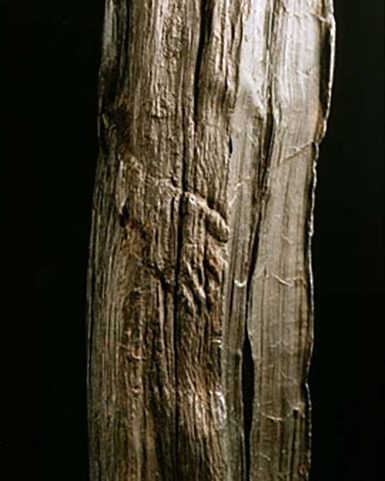
Close up detail of the surviving right hand of the Ballachulish figure. Museum reference X.KL 54.

Side-on view of the head of Ballachulish figure. Museum reference X.KL 54.
The figure's fate
Pebbles found embedded in the bottom of the block suggest that the figure had originally stood on solid ground.
She was deliberately buried in the bog at the end of her life. The intertwined branches and poles found around her perhaps came from a wickerwork container, or a little shrine that surrounded her. Cuts angled across her chest suggest she may have been ceremonially ‘killed’ before she was buried.
A rich prehistoric landscape
This area is rich in archaeological remains. The Ballachulish Moss area is nationally important for its archaeology, and is a Scheduled Ancient Monument.
Within half a kilometre there are several Bronze Age burial monuments. Peat-cutters found remains of wooden vessels and animal bones which may have been offerings. There were also ‘several barrow-loads’ of worked flint, inside a round building, deep under the peat.
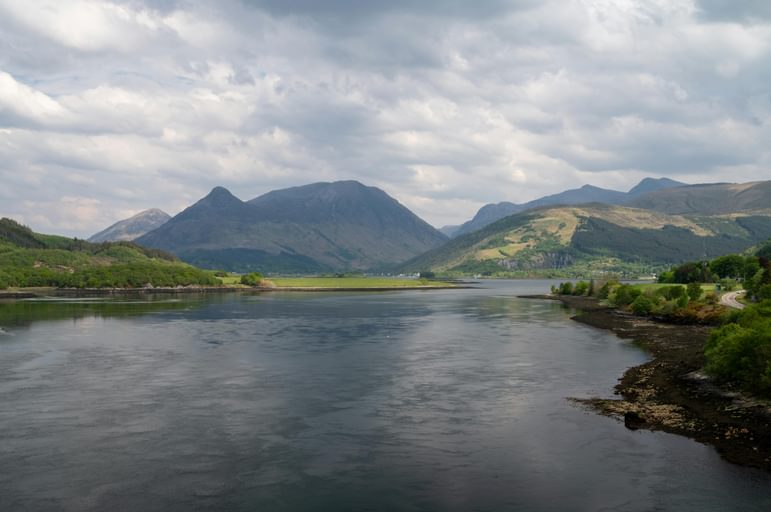
View of Loch Leven in the Scottish Highlands.
Conservation challenges
The Ballachulish figure looks very different today from when she was found. There were no scientific techniques to preserve waterlogged wood in the 1880s. Although those looking after the figure wanted to keep it wet, they could not find a container large enough, so they decided to let it dry out.
It was taken to the (then-named) National Museum of Antiquities of Scotland in Edinburgh shortly after its discovery, but during the journey, it broke at the legs. When it dried out, it warped and cracked, distorting the figure.
So, if you find waterlogged wood or similar material - keep it wet and call a museum!
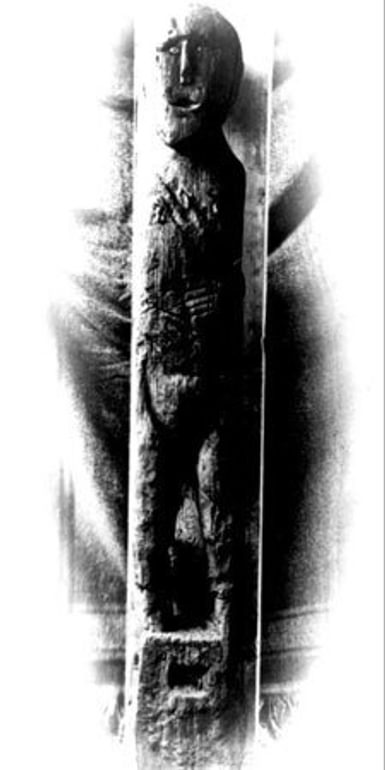
The Ballachulish Figure when discovered in 1880. Museum reference X.KL 54.
The Ballachulish figure can be found in the Early People gallery at the National Museum of Scotland.
